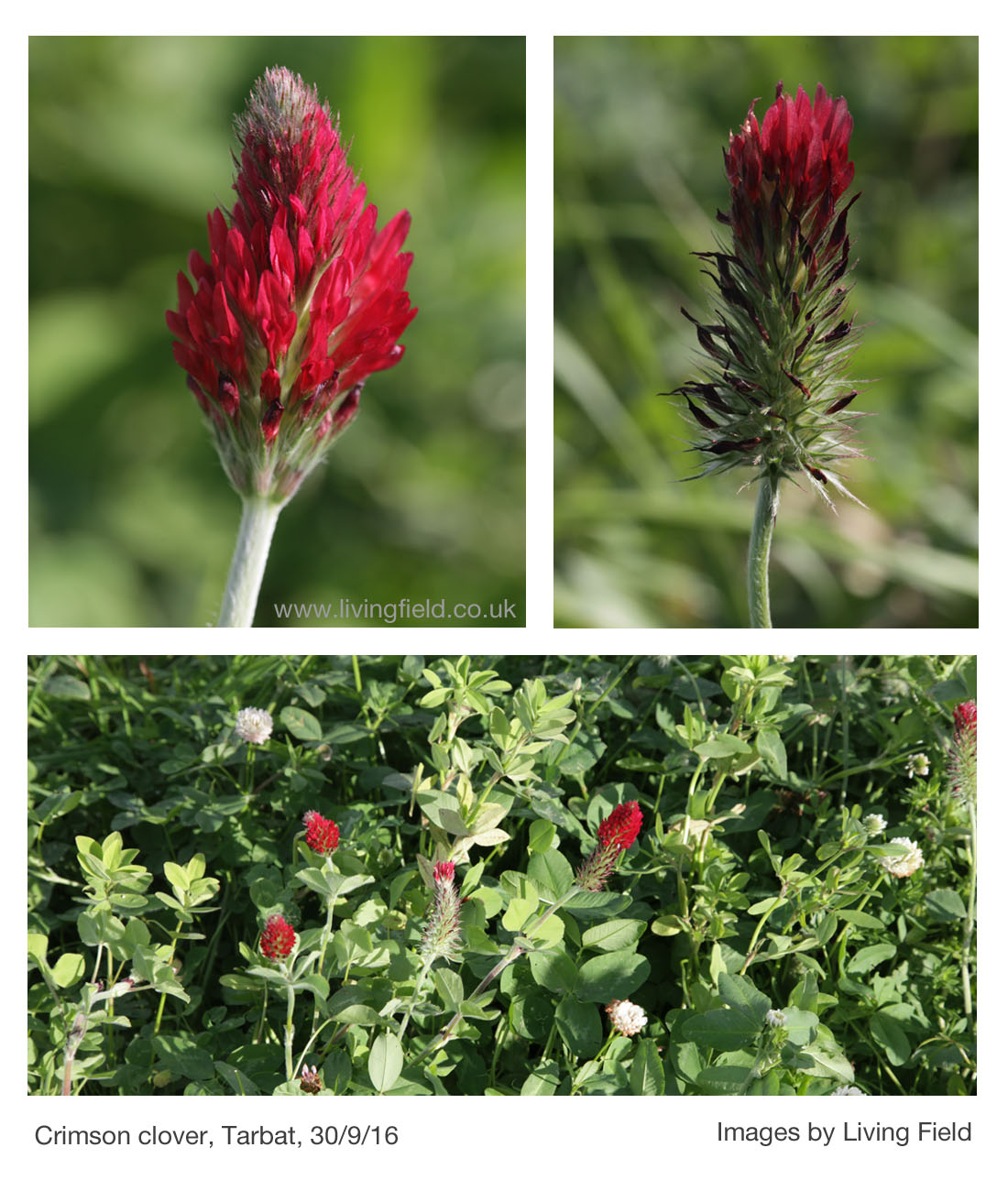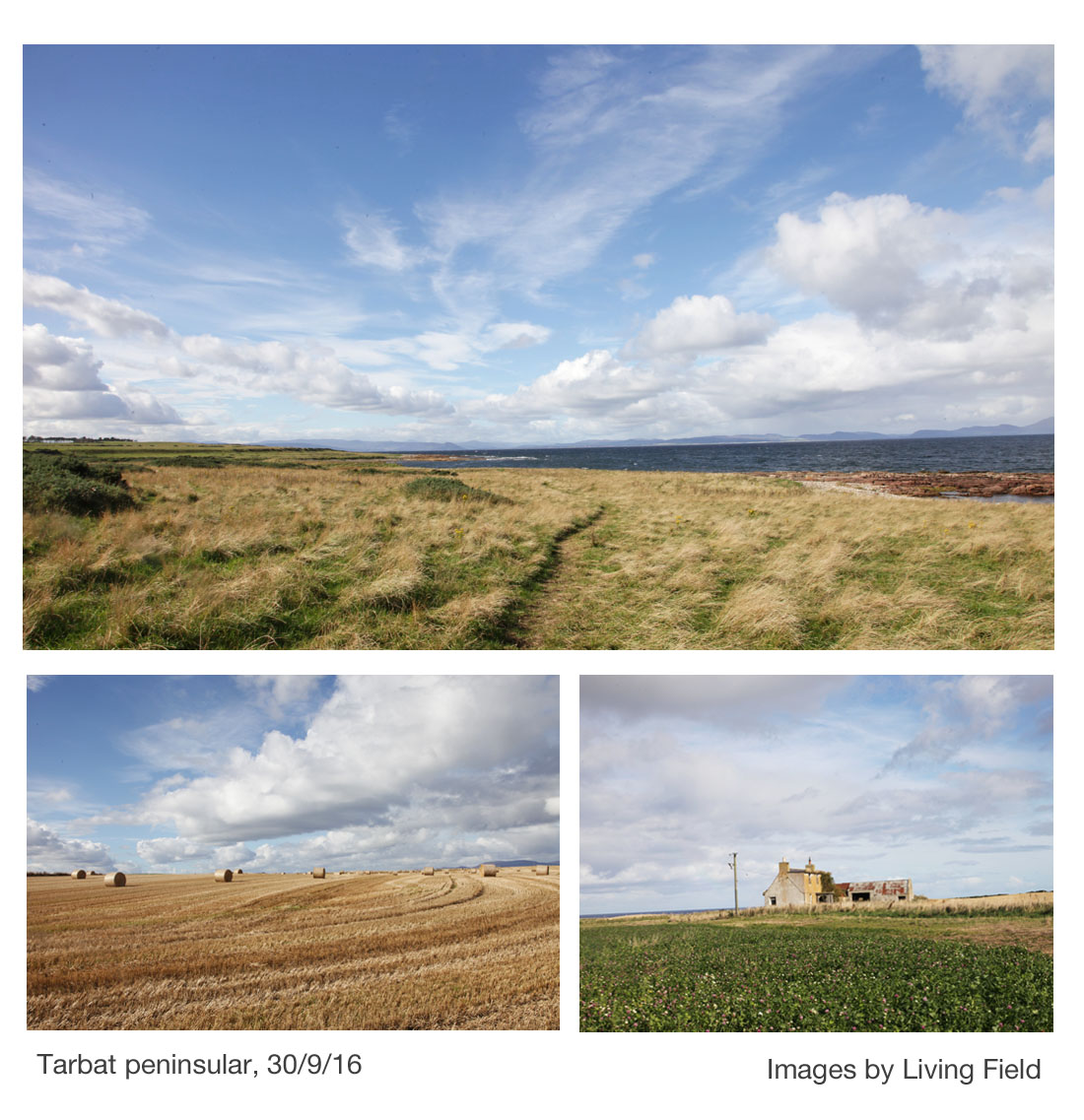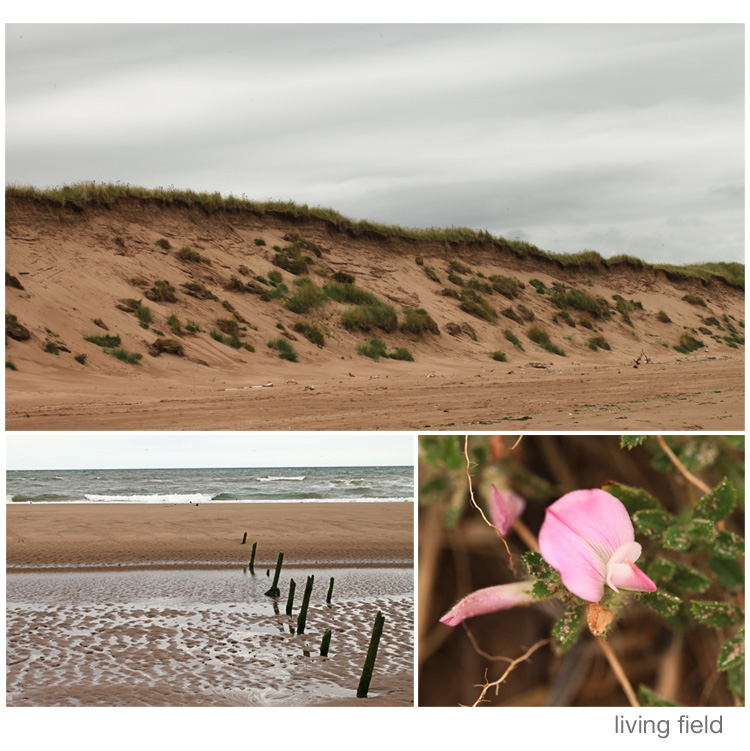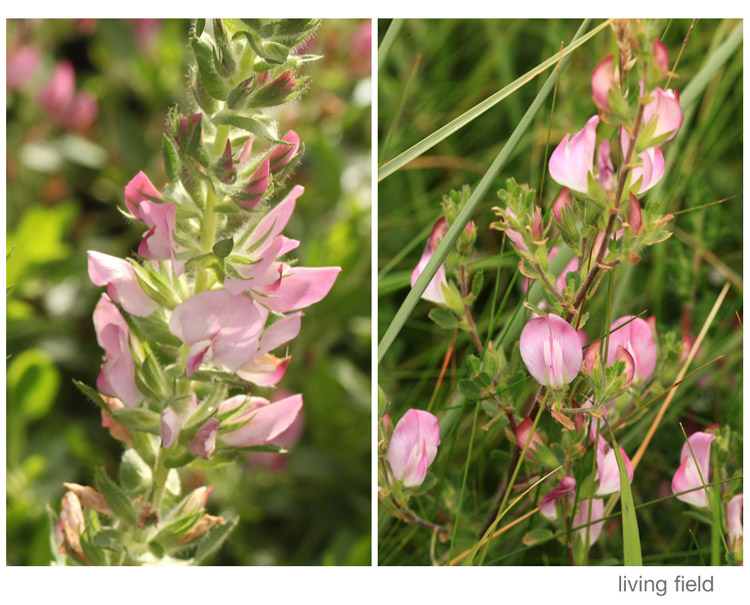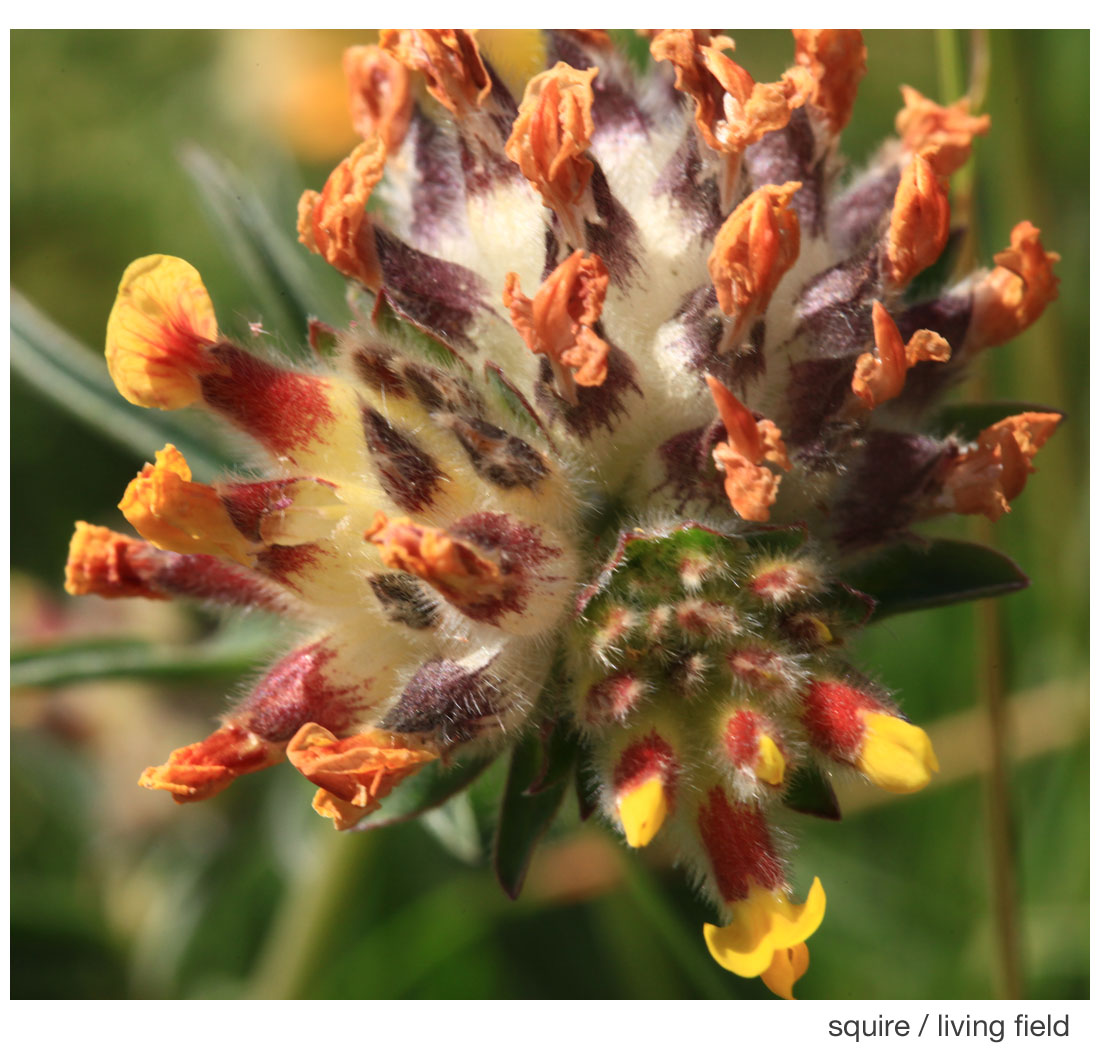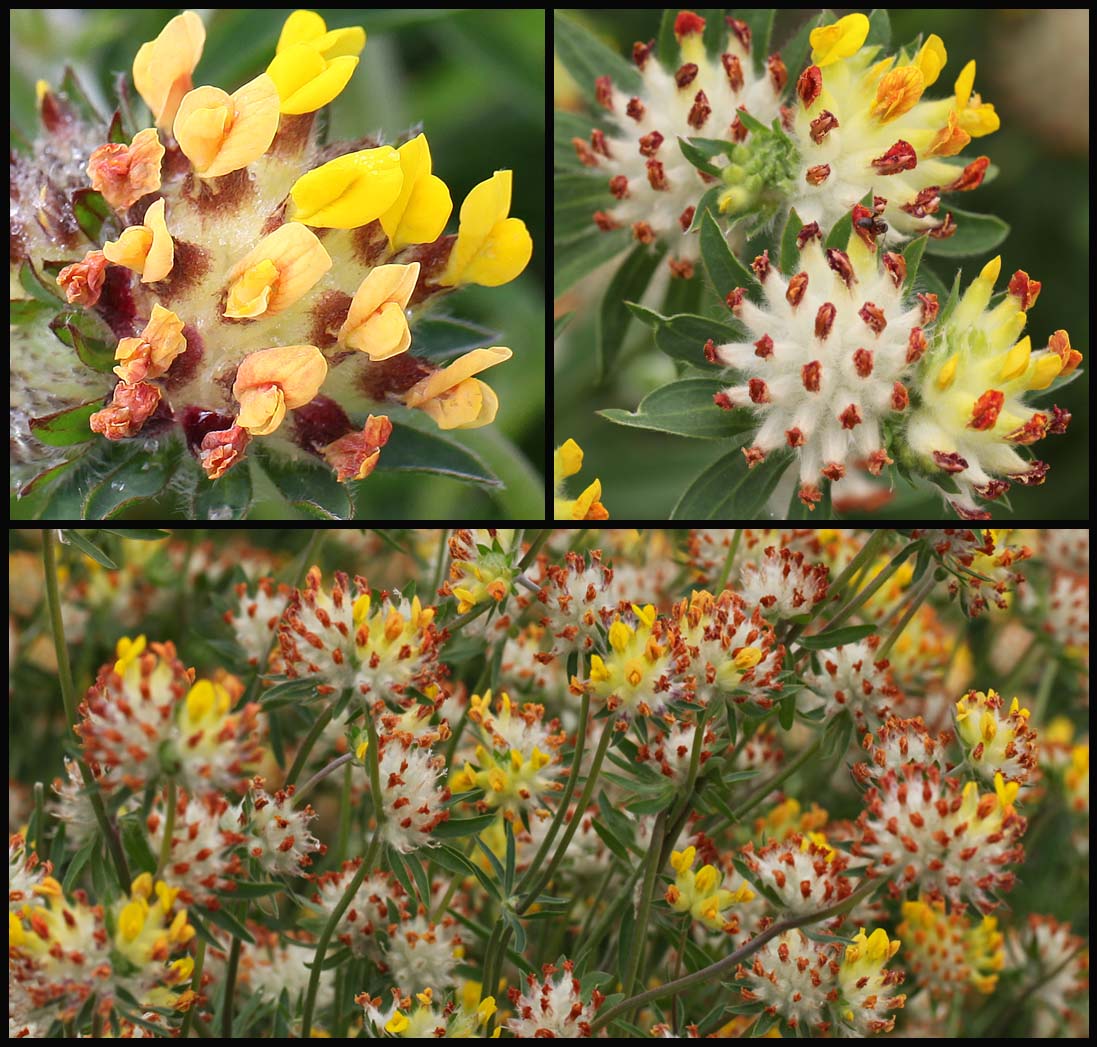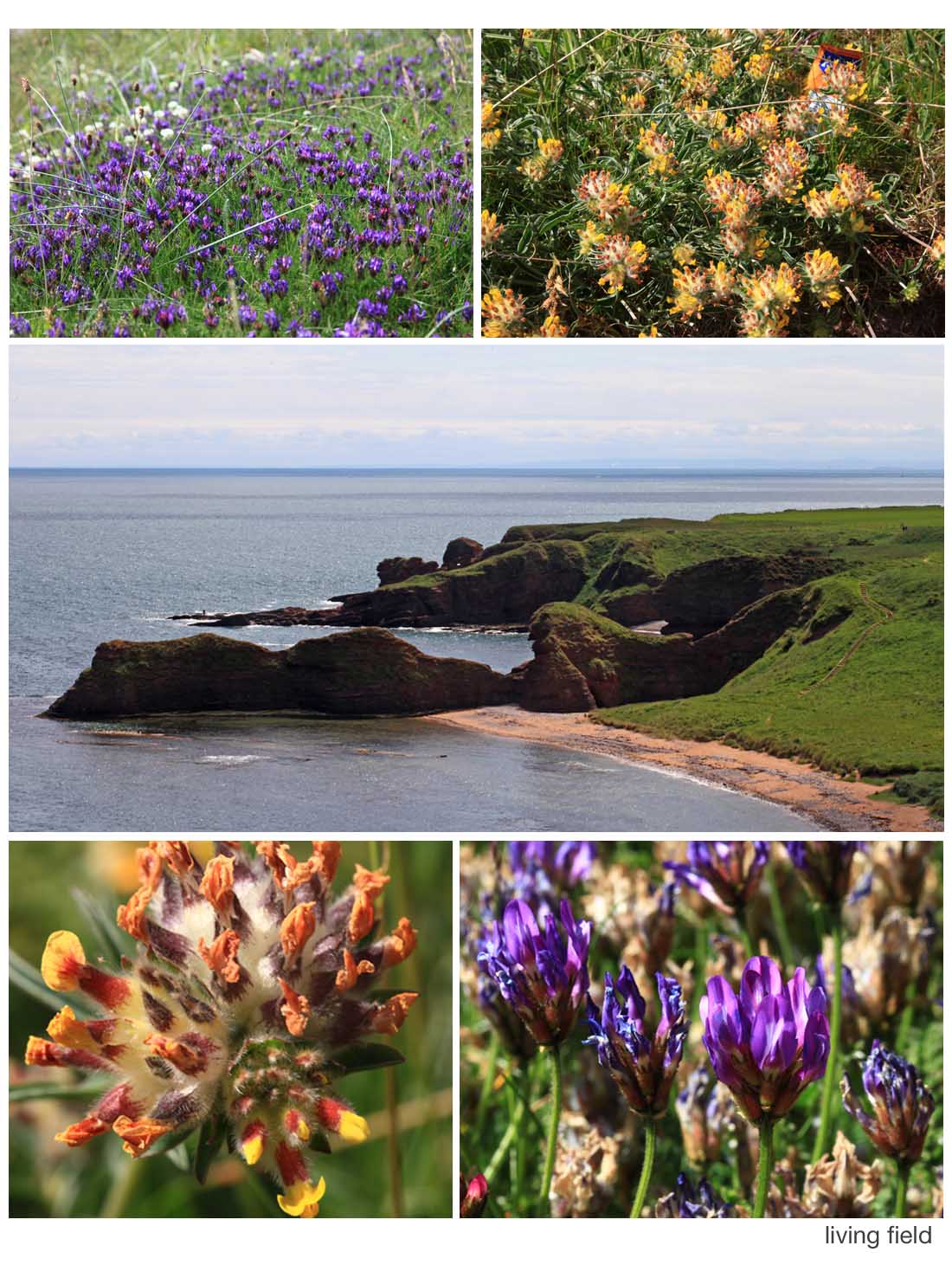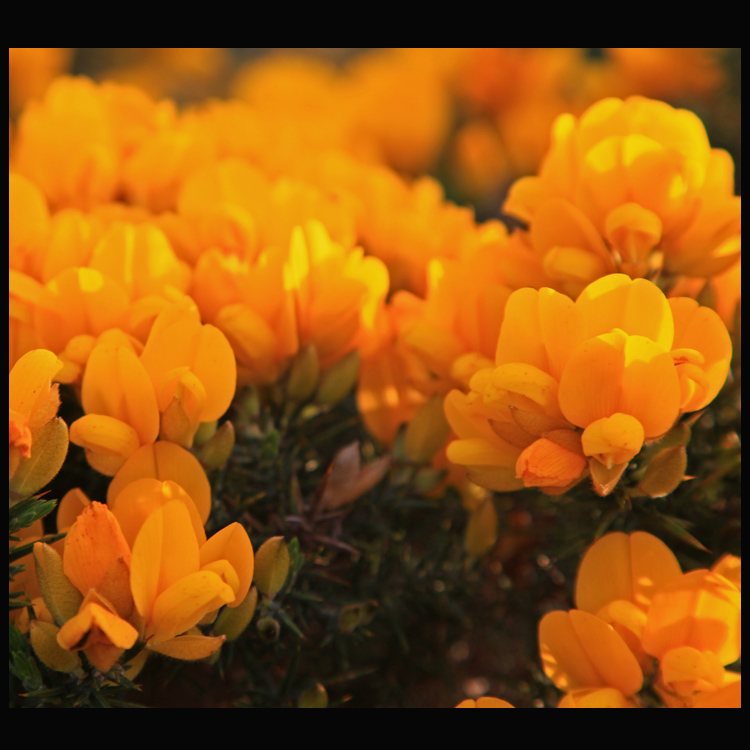Third in a series on nitrogen fixing legume plants.
The crimson clover Trifolium incarnatum ssp incarnatum was once grown widely in the south of Britain and trialled in the north, where it never found favour as a forage ley compared to the white and red clovers. So a small field of mixed legumes in Tarbat, a few miles south of Portmahomack, was unusual.
Crimson clover was the most visible of the plants, in full flower late September, but the patch also contained red clover, two white- flowered clovers and a few other plants. On its margins a stray sainfoin appeared, probably a relic from a previous sowing.
Crimson clover was noted in Lawson & Son’s Vegetable Products of Scotland (1852). They report that, if sown in autumn, it can be cut in June the next year ‘…. and the land fallowed for wheat or spring corn’. They report that is makes a valuable green food for cattle and when cut in full flower ‘it makes a more abundant crop, and a superior hay to that of common clovers, at least it is more readily eaten by horses’.
They also report a comparison of ‘common crimson clover’, a variety of it named ‘late-flowering crimson clover’ sourced from Toulouse in France, and Moliner’s clover which was said to be grown in France and Switzerland. The late flowering variety came out top.
In modern taxonomy, the only one of these native to Britain is now called long-headed clover Trifolium incarnatum ssp molinerii, white-flowered, but that is found at only a few coastal sites in the south of Britain. This is likely to be the same as the Moliner’s clover mentioned by the Lawsons, but their seed was most likely sourced from European seedsmen rather than from the wild in Britain. Crimson clover is now Trifolium incarnatum ssp incarnatum. Moliner’s and crimson are therefore considered sub-species (ssp) of the same species.
So what was it doing here? It was probably sown in a clover mix as a legume contribution to CAP Greening measures (see Sources). As can be seen the mix was luxuriant in foliage and flower well into autumn, when many other wild plants were dying or seeding.
Tarbat is a rich agricultural region, and you can see why the Picts farmed and established their monastery and unique monuments here over 1000 years ago. Today, small fields and patches like the one shown offer refuge and food for insects and birds in a landscape dominated by grazing land, and harvested or ploughed fields.
Sources
Peter Lawson and Son. 1852. Synopsis of the vegetable products of Scotland. Edinburgh: Private Press of Peter Lawson and Son
Mixtures for CAP Greening and also crimson clover alone: Cotswold Seeds https://www.cotswoldseeds.com/seed-info/greening-and-cap-reform
Taxonomy from: Stace C. 1997. New flora of the British Isles 2nd Edition.
Links to legumes on this web site:
- Fixers 1 – coastal legumes
- Kidney vetch and the small blue
- Fixers 2 – restharrow
- Legumes in the Living Field garden
Contact: geoff.squire@hutton.ac.uk. Images are the property of the Living Field project.

